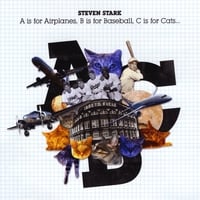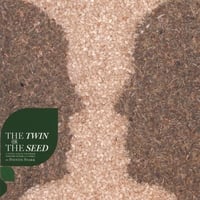Paul McCartney is often described as a great melody writer. I love Paul's work, but to me he is more of a great hook writer. I would define a hook as a short phrase, usually repeated several times, that tends to stick with you, making you want to sing along. Hooks are wonderful things, but I don't really think of them as being proper melodies, although they are certainly in the same family.
A melody is a combination of rhythm and pitch that seeks to be memorable and yet fresh. A good melody involves repetition and variation. It is, as Paul Simon once described music he likes and tries to make, like driving home a different way. There is surprise and also familiarity. I also believe that a good melody is something that unfolds over a few bars. A hook, or melodic hook, might fill a bar or two, and this is an art form unto itself, but a melody needs some distance to twist and turn a little bit. It needs room to accomplish its goals.
I suppose my definition of melody might be what some people think of as a theme. Something that stands on its own apart from lyrics, although of course it should work with lyrics too in the context of a song. Also, I think a great theme/melody should even work divorced from its harmonic setting - although this of vital importance to the aggregate music, of course. But we can still analyze it at its bare bones, and too often writers rely on the tried-and-true technique of presenting a repeated melody line over a different chord (I know I have!). The most basic example of this would be a traditional blues song. Once again, it doesn't mean it's not a great song, but I am focusing on melody here.
Schubert is regarded as one of the great melodists of Western civilization. I think his reputation is well-deserved. Listen to one of his first great songs "Gretchen Am Spinnrade (Gretchen at the Spinning Wheel)". Over a piano setting which evokes a spinning wheel, the soprano gives us a lovely melody, unfolding over a few bars reaching a high point. Then as the melody seems set to repeat, the music quickly goes into a new direction. A minute or so in, the original melody returns. Great stuff.
That said, Schubert's B theme to the opening movement of the "Unfinished" Symphony is a celebrated melody that I do not find all that compelling. The opening interval of a downward moving fourth is repeated once too often for me. But it's still a great symphony!
I recently read a criticism of the second movement of Haydn's "Emperor" string quartet. The central complaint was that the movement, which is a theme and variations, does little with the variations except pass the theme around between the quartet members. Haydn does not do all the traditional alterations, presenting fragments of the theme in augmentation or diminution, changing tempos, keys, etc. But it doesn't bother me. I think he knew he had a great melody and he simply altered the arrangement each time it is played. The sustained D in the cello in the last presentation of the theme, which then rises up leading into the high point of the melody, is one of the most sublime moments in any piece I know.
Talk about an extended melody, listen to the opening of Anton Bruckner's 7th symphony. The cellos, through a mist of tremelo strings, give us a beautiful, unfolding melody, full of ups and downs, unexpected turns and hooks to stick in our ears. The entire melody takes about a minute to play - many Beatles songs would be almost half over in that time! Of course this is comparing apples and oranges. Popular song serves a different purpose than the broad symphonic writing of the late Romantic period. But still, I love a melody that takes a minute to play without repetition, yet still achieves structural integrity. It's pretty breathtaking.
But that isn't to say that popular songs cannot have wonderful melodies.
Let's give Paul McCartney some well-deserved credit. My favorite Beatles song is "Martha My Dear", a tune he wrote for his beloved sheep dog. And it is a great melody. What really makes it, is that the second bar of the tune is a 5/4 measure. And the entire melody spans an asymmetric 7 bars - just like another excellent melody of his - "Yesterday." When the horns present the main tune of "Martha" with hand claps.....well that is a sublime moment for me.
Paul Simon is a great, great American songwriter. Despite his focus on rhythm and texture over the last several decades, which has produced lots of great stuff, some of his melodies from the 60's and 70's are wonderful. "Bridge Over Trouble Water" is a long, unfolding melody. "Still Crazy After All These Years" is a great melody which covers a lot of range and harmonic complexity. Incidentally, Simon was studying theory when he wrote that song and derived the bridge by using the remaining tones he had not yet used in the 12 tone scale. He also used a key change in the middle of the last verse - right before the line "I would not be convicted by a jury of my peers" - a super clever way to achieve the intensity of a rising chord change while avoiding the cliche of doing it before the beginning of the last verse!
A more recent group that really caught my attention is Belle And Sebastian. I had heard some of their work, but when I first listened to the tune "Stars of Track and Field" I knew that Stuart Murdoch was a different kind of songwriter. It's a long melody, reminiscent of the great bossa nova composer Antonio Carlos Jobim - whose tune "Desfinado (Out Of Tune) is another beautiful melody. This particular tune by Belle and Sebastian uses a lot of sequences. This is the presentation of the same melodic content at a different pitch level. Think of Bach's Minuet in G. The first two measures are followed by a sequence of the same melodic content at a higher pitch level. It's a great technique to catch a listener's ear and give a phrase a unity of structure.
A few other great melodies by Belle and Sebastian (off the top of my head) are "The Model", "I'm Waking Up To Us", and "My Wandering Days Are Over" - when the trumpet presents the melody over a background of violin double-stops, another sublime moment!
Tunes like Hoagy Carmichael's "Stardust" and George Shearing's "Lullaby of Birdland" remind us of the pre-rock 'n roll focus on melody. I think the swing era may be one of the greatest triumphs of the twentieth century in combining complexity and richness of writing and performing with popular appeal. The golden era of American popular song produced and wealth of wonderful melodies. And the be-bop era took melodic writing to a new level of complexity, but artists such as Charlie Parker always sought to hook the listener's ear. Check out the opening of "Ornithology" among so many others....and listen for sequences!
What are some of your favorite melodies?


